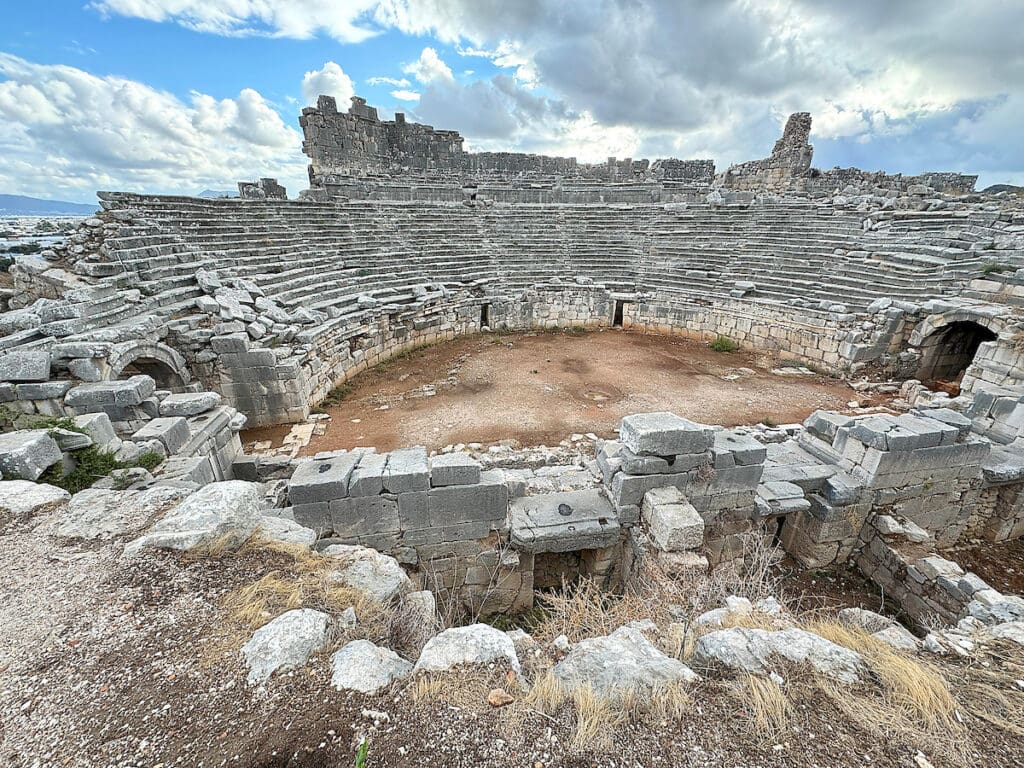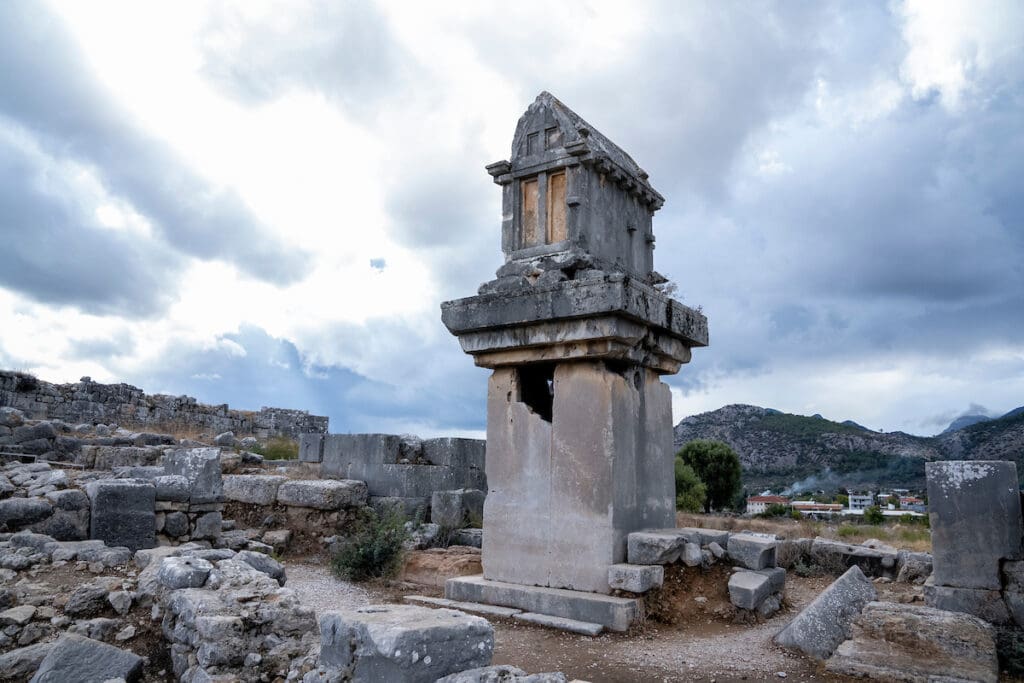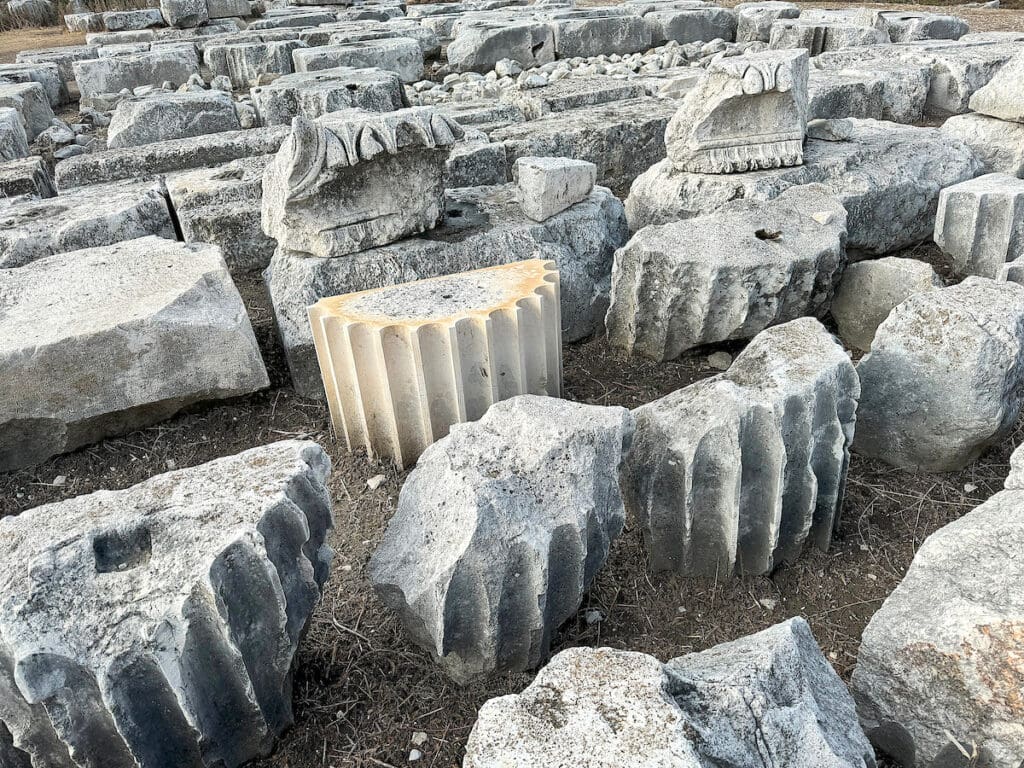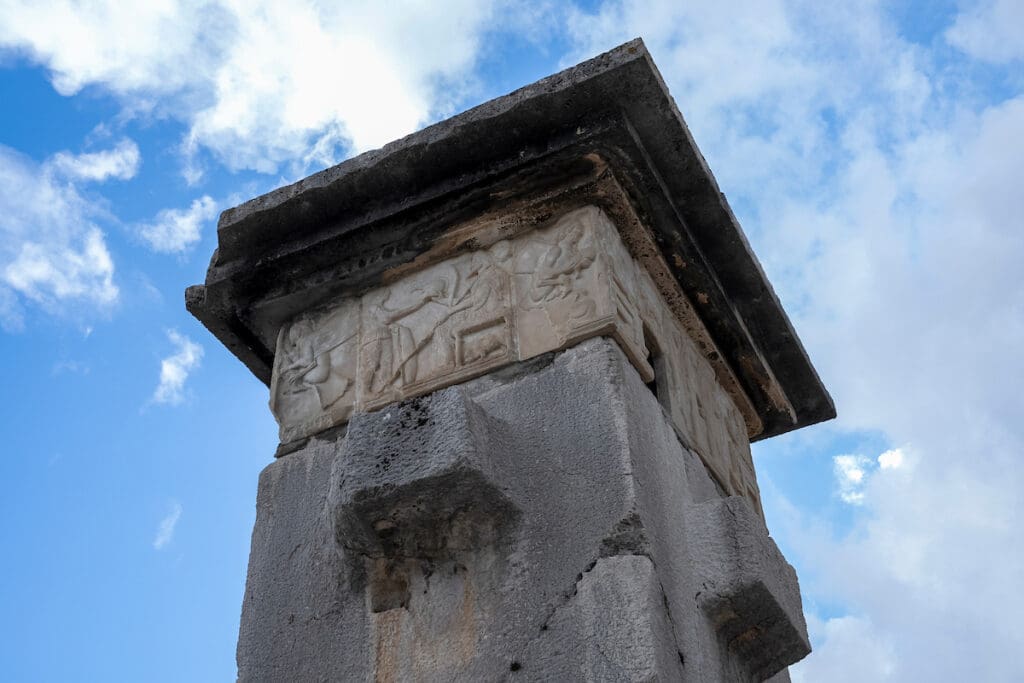The ancient city of Xanthos dates back to the 8th century BCE and has been named a UNESCO World Heritage site renowned for its impressive monuments. Xanthos is where the present-day village of Kınık, in Antalya Province, Turkiye is today. The ruins of it are located up on a hill on the left bank of the nearby River Xanthos. In its prime, Xanthos was home to Lycians, a radical independent civilization of naval raiders. The people had their own language and script and were the last people in Asia Minor to become part of the Roman Empire.

The site is home to stone ruins of a theatre, temples, tombs and other structures. The most remarkable structures left of the city are huge rock-cut pillar tombs. Some of the more famous of these tombs (the Monument of Harpy, the Tomb of Payava and the Nereid Monument) were transported to England in the 19th century by British archaeologist Sir Charles Fellows where they are exhibited today.

There are at least 33 known tombs in Xanthos, but there may be more that have been destroyed, buried, or submerged underwater. The tombs date from the mid-sixth century B.C. to the mid-fourth century B.C and contain Lycian, Greek, and Persian style architecture. The pillars are stone burial chambers on top of a large stone pillar. Bodies of men who ruled in the Lycian dynasty were placed at the top of the pillar in the burial chamber. Their being lifted off the ground shows the continuity of their reign and power.

Other tombs are rock-cut into the mountainous areas of Xanthos and were most likely used for everyday citizens. The interiors of these mountainside tombs are plain and may have several shelves. Some have inscriptions and Medusa head busts warning off potential thieves. There is archaeological evidence suggesting that the Lycians entombed their dead with a few everyday items and jewelry like the Egyptians.

There are plenty of tour options for visiting the ruins at Xanthos. You can hike, bike, boat, and kayak around and through Kınık discovering all the charm in its historical nature. It is recommended that you take a guided tour so you can hear the history of specific structures and know where to find them. This travel destination is perfect for Roman and Greek history lovers and adventurers alike.

